CONOID
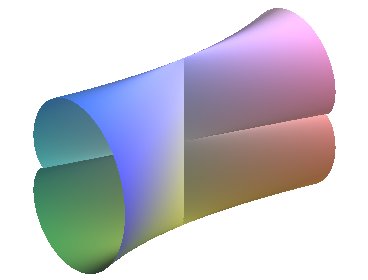
| next surface | previous surface | 2D curves | 3D curves | surfaces | fractals | polyhedra |
CONOID

| Cartesian general equation of a conoid with axis Oz
and directrix plane z =
mx:
Solving for z yields First quadratic form in the right case: Cartesian equation of the conoid with axis Oz, directrix plane z = mx and directrix the curve (C) with equation f(y, z) = 0 in the plane x = a: Cartesian parametrization of the conoid with axis Oz,
directrix
plane z =
mx and directrix the curve: |
Examples of algebraic conoids:
degree 2: the hyperbolic
paraboloid, which is a conoid in two ways
degree 3: all the ruled
cubic surfaces, including Plücker's
conoid, Zindler's conoid and
the parabolic
conoids.
degree 4: the cunocuneus.
Examples of transcendental conoids:
- the right
helicoid.
- the sinusoidal
conoid, or Gaudi surface.
Some visual examples:
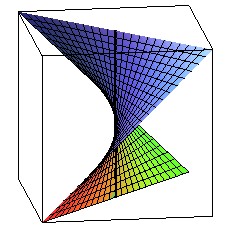 |
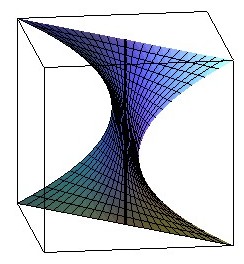 |
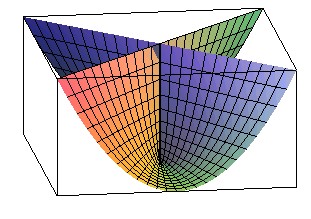 |
| Right conoid with directrix a line neither parallel, nor perpendicular
to the axis: hyperbolic
paraboloid
equation: z = y /x. |
Right conoid with directrix a parabola with axis perpendicular to that
of the conoid: see parabolic
conoid.
equation: z² = y/x |
Right conoid with directrix a parabola with axis parallel to that of
the conoid: Whitney's umbrella
equation: z = (y/x)² |
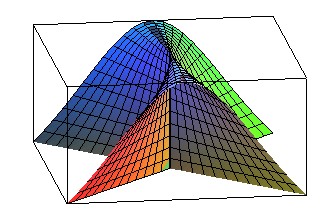 |
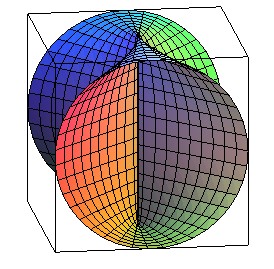 |
| Right conoid with directrix a witch of Agnesi: Plücker's
conoid.
equation: z = (1 - (y/x)²)/(1 + (y/x)²). |
Right conoid with directrix a circle in a plane parallel to the axis:
cunocuneus.
equation: z² + (y/x)^2 = 1 |
| The notion of directrix can be generalized to a surface:
the conoid is then defined as the reunion of the lines passing by the axis,
parallel to the directrix plane, and with tangents on the directrix surface.
For example, here is the case where the directrix surface is the sphere with radius b centered on (a, 0, 0), the directrix plane is xOy, and the axis is Oz: Cartesian equation: Cylindrical equation: Cartesian parametrization: Parametrization of the tangency curve between the surface and the sphere: When b = a we get Plücker's conoid of order 1. |
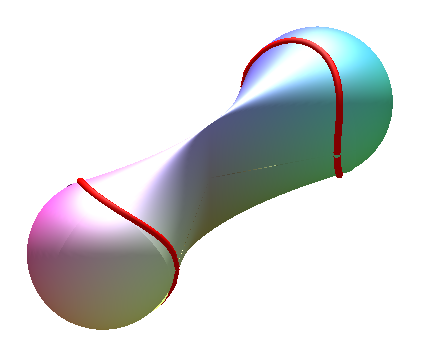 |
| Any plane curve is the projection of the intersection
of a conoid and a cone of revolution;
more precisely, the curve with polar equation Opposite, for example, the cardioid |
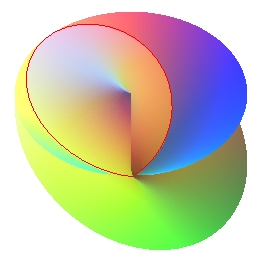 |
Sometimes the term conoidal surface refers to a
ruled surface with two linear directrices: the conoid is then the case
where one of these directrices is at infinity.
The image of a conoidal surface (and therefore of a conoid)
by a homography is a conoidal surface.
The milk carton
is an example of such a surface.
| next surface | previous surface | 2D curves | 3D curves | surfaces | fractals | polyhedra |
© Robert FERRÉOL 2017